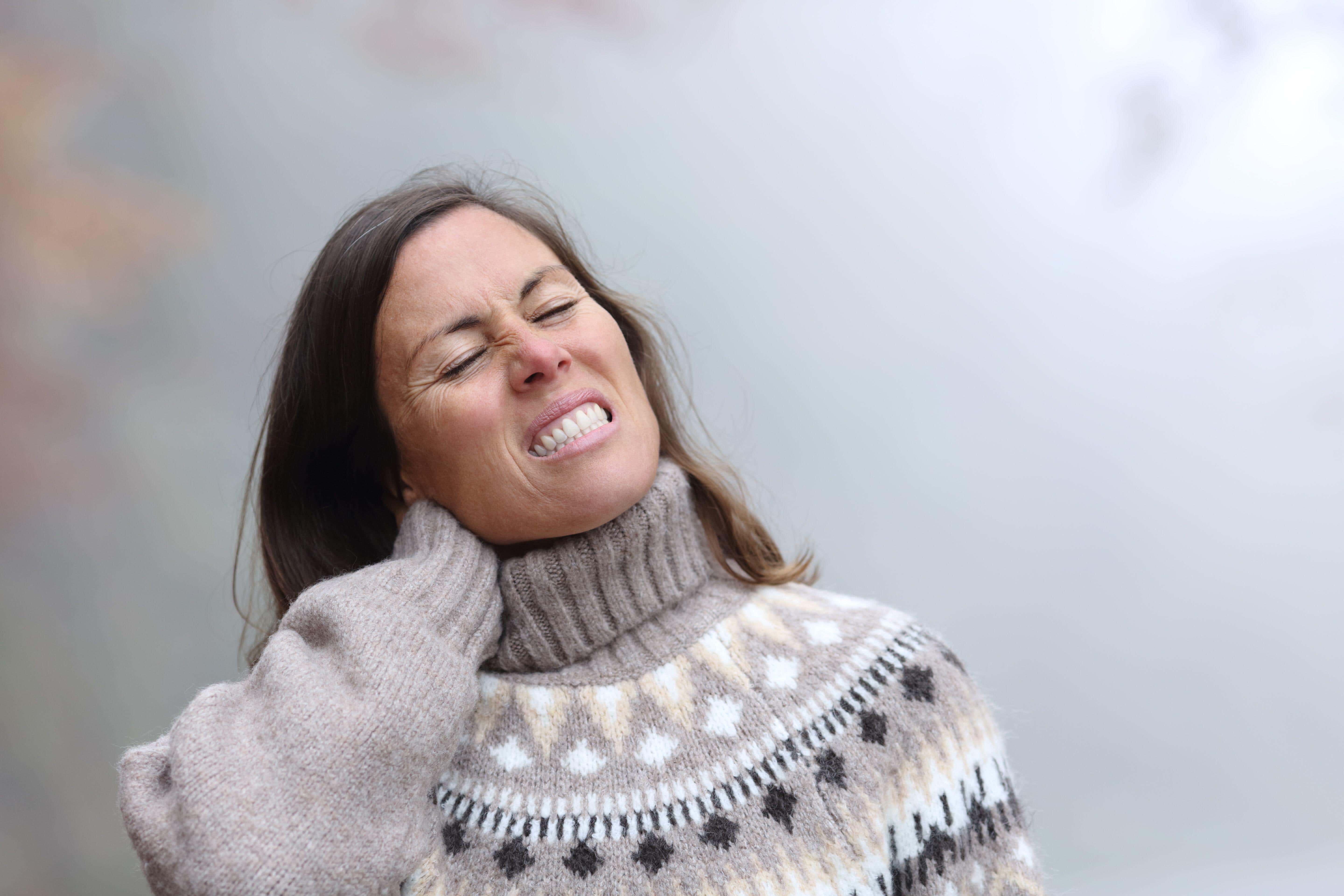Why do my joints hurt more in cold weather?
Make sure you look after your body in the lead up to winter.

Your support helps us to tell the story
From reproductive rights to climate change to Big Tech, The Independent is on the ground when the story is developing. Whether it's investigating the financials of Elon Musk's pro-Trump PAC or producing our latest documentary, 'The A Word', which shines a light on the American women fighting for reproductive rights, we know how important it is to parse out the facts from the messaging.
At such a critical moment in US history, we need reporters on the ground. Your donation allows us to keep sending journalists to speak to both sides of the story.
The Independent is trusted by Americans across the entire political spectrum. And unlike many other quality news outlets, we choose not to lock Americans out of our reporting and analysis with paywalls. We believe quality journalism should be available to everyone, paid for by those who can afford it.
Your support makes all the difference.Stiffness, aches and pains are often associated with changes in weather, especially when temperatures begin to drop in the lead up to winter.
Persistent pains can be really debilitating, so it is important for us to look after our joints when it’s cold.
Experts explain why joint pain often arises in the cooler months, and also offer advice on what we can do to prevent this…
Why do some people experience joint pain in the winter?
Joint pain around winter can arise due to various factors, and cold weather plays a significant role in this.
“As the weather gets colder, our body pulls blood away from our extremities to protect our vital organs and keep them warm,” explains Jon Taberner, rehabilitation specialist at Nuffield Health. “This results in less blood flow to our joints, and less blood flow can lead to poorer lubrication around the joint, and therefore, more pain.”
Changes in barometric pressure may also be to blame.
“Drops in barometric pressure before cold weather or storms can cause tissues to expand slightly, leading to increased pressure on the joints,” says Dr Catherine Spencer-Smith, sports and medicine consultant at The Wellington Hospital, part of HCA Healthcare UK.
Inactivity during the colder months and existing conditions also play a part in this.
“During winter, many people become less active, which can lead to muscle weakness, joint stiffness, and greater sensitivity to pain,” explains Spencer-Smith. “Meanwhile, chronic conditions like osteoarthritis, rheumatoid arthritis, or fibromyalgia are often exacerbated by the cold.”
People are most likely to experience pains in their peripheral joints during the colder months.
“Peripheral joints such as hands, feet and knees are more likely to be affected due to circulatory issues,” explains Sam Bhide, advanced practice physiotherapist and founder of Physiozen.
Who is affected by this?
“Joint pain can affect anyone, especially during the cold, wet winter months,” Clara Kervyn, physiotherapist from topical muscle and joint care specialists Deep Relief. “But as we get older, this is likely to increase as our joints have experienced more wear and tear.”
What signs indicate that something might be wrong?
If joint pains are impacting your everyday life, contact a health professional.
“You should always contact your medical professional if the pain is new or noticeably more severe, if the joint becomes red, swollen or hot to the touch, or if the pain and/or stiffness doesn’t improve once you begin to move,” highlights Taberner. “And also if you feel any additional symptoms such as fever and sickness.”
A sudden onset of pain could also be a red flag.
“Unexplained pain without an injury may point to conditions such as gout or even an infection,” says Spencer-Smith.
How can joint pains be treated?
Joint pains are often treated with over-the-counter pain relief.
“Anti-inflammatories like ibuprofen or topical creams can help manage pain,” says Spencer-Smith. “Heat packs or warm baths are also excellent for relaxing stiff muscles and joints, reducing discomfort.”
If the pain is more persistent, then contact your local physio or health care professional as they can recommend exercises and rehabilitation plan.
What can people do to look after their joints?
Move your body
“Moving will stimulate the release of synovial fluid in the joint, which helps alleviate stiffness,” explains Taberner. “It also increases blood flow to the joints you are moving and helps warm your whole body up, which can also help to decrease pain.
“Walking can be a great low-impact exercise to keep our joints strong and blood flow circulating around the most common joints we experience pain in.”
Layer up
When the cold, damp weather kicks in, make sure you wear appropriate clothing.
“Cover the areas that have poor circulation, i.e, thick winter socks, gloves, scarves and extra jumper or jackets,” advises Bhide.
In addition, Kervyn reminds everyone to also wear clothes that keep your body dry.
“Opt for waterproof jackets on rainy days and make sure your shoes aren’t letting water in,” recommends Kervyn. “If you know you’ll be out and about getting wet and cold, take extra clothes to change into.”
Try strengthening exercises
“A sustainable strength-based exercise regime will also increase protective effects and further decrease your risk of these pains developing in the future,” says Taberner.
However, speak to a medical or fitness professional before you start.
“They can provide guidance on performing strength training safely and effectively,” explains Taberner. “It’s crucial when building exercise regimes that you’re doing exercise you enjoy, and a professional can help you to identify what that regime may look like.”